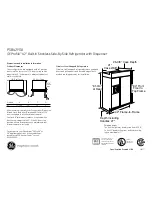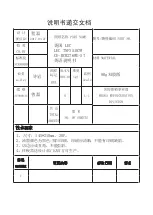
Unit Description (Rev. 04/03)
10
UNIT OPERATION
Pre-trip Inspection (Before Starting Unit)
The following pre-trip inspection should be completed
before starting the unit and loading the truck. While pre-trip
inspection is not a substitute for regularly scheduled mainte-
nance inspections, it is an important part of the preventive
maintenance program designed to head off operating prob-
lems and breakdowns before they happen.
1.
FUEL. The diesel fuel supply must be adequate to
guarantee engine operation to the next check point.
2.
ENGINE OIL. The engine oil level should be at the
FULL mark. Never overfill.
3.
COOLANT. The engine coolant must have antifreeze
protection to -30 F (-34 C). Check and add coolant in
the expansion tank.
CAUTION: Do not remove expansion tank cap
while coolant is hot.
4.
BATTERY. The terminals must be clean and tight.
5.
BELTS. The belts must be in good condition and
adjusted to the proper tensions.
6.
ELECTRICAL. The electrical connections should be
securely fastened. The wires and terminals should be
free of corrosion, cracks or moisture.
7.
STRUCTURAL. Visually inspect the unit for leaks,
loose or broken parts and other damage. The condenser
and evaporator coils should be clean and free of debris.
Check the defrost drain hoses and fittings to be sure
they are open. The damper in the evaporator outlet
must move freely with no sticking or binding. Make
sure all the doors are latched securely.
Starting Unit (Full Unit Self Check)
The procedure is used for a complete checkout of the truck,
unit, and unit control circuits. It should be used when first
starting the unit for a trip before the cargo is loaded. A full
Unit Self Check procedure may take up to 30 minutes and
the unit will run unattended.
1.
Perform a Pre-trip Inspection.
2.
Adjust the setpoint to the desired load temperature
(refer to the Operation Manual (TK 41087) for detailed
information about adjusting the setpoint).
a.
Change the setpoint display with the arrow keys.
b.
Enter the new setpoint by pressing the ENTER key
within 5 seconds.
3.
Initiate a Unit Self Check (refer to the Operation Man-
ual for detailed information about the Unit Self Check).
This procedure is automatic and can be performed on
the way to the loading area or while waiting to load.
a.
Press the ON button.
b.
Clear any alarms.
c.
Press and hold the T/K key for at least 3 seconds
until the Unit Self Check [USC] prompt screen
appears.
d.
Press the ENTER key. The display will briefly
show Lod (load) and the unit will then start the
Unit Self Check.
Summary of Contents for KD-II SR
Page 4: ......
Page 8: ......
Page 13: ...Safety Precautions Rev 04 03 v AEA40...
Page 14: ...Safety Precautions Rev 04 03 vi AEA38...
Page 33: ...Unit Description Rev 04 03 19 1 Evaporator 2 Access Door Rear View Curbside KD II SR 1 2 AEA38...
Page 37: ...Unit Description Rev 04 03 23 Power Receptacle Box KD II SR 50 AEA42...
Page 58: ...Remote Control Panel Features Rev 04 03 44...
Page 112: ...Refrigeration Maintenance Rev 04 03 98...
Page 120: ...106...
Page 146: ...132...
Page 156: ...142...
Page 162: ...148...
Page 170: ...156...
Page 172: ...158...
Page 173: ...159 KD II 30 Schematic Diagram Page 1 of 2...
Page 174: ...160 KD II 30 Schematic Diagram Page 2 of 2...
Page 175: ...161 KD II 30 Wiring Diagram Page 1 of 2...
Page 176: ...162 KD II 30 Wiring Diagram Page 2 of 2...
Page 177: ...163 KD II 50 Schematic Diagram Page 1 of 2...
Page 178: ...164 KD II 50 Schematic Diagram Page 2 of 2...
Page 179: ...165 KD II 50 Wiring Diagram Page 1 of 2...
Page 180: ...166 KD II 50 Wiring Diagram Page 2 of 2...
Page 181: ...167 KD II 50 SR 230 1 60 Wiring Diagram Page 1 of 2...
Page 182: ...168 KD II 50 SR 230 1 60 Wiring Diagram Page 2 of 2...
















































